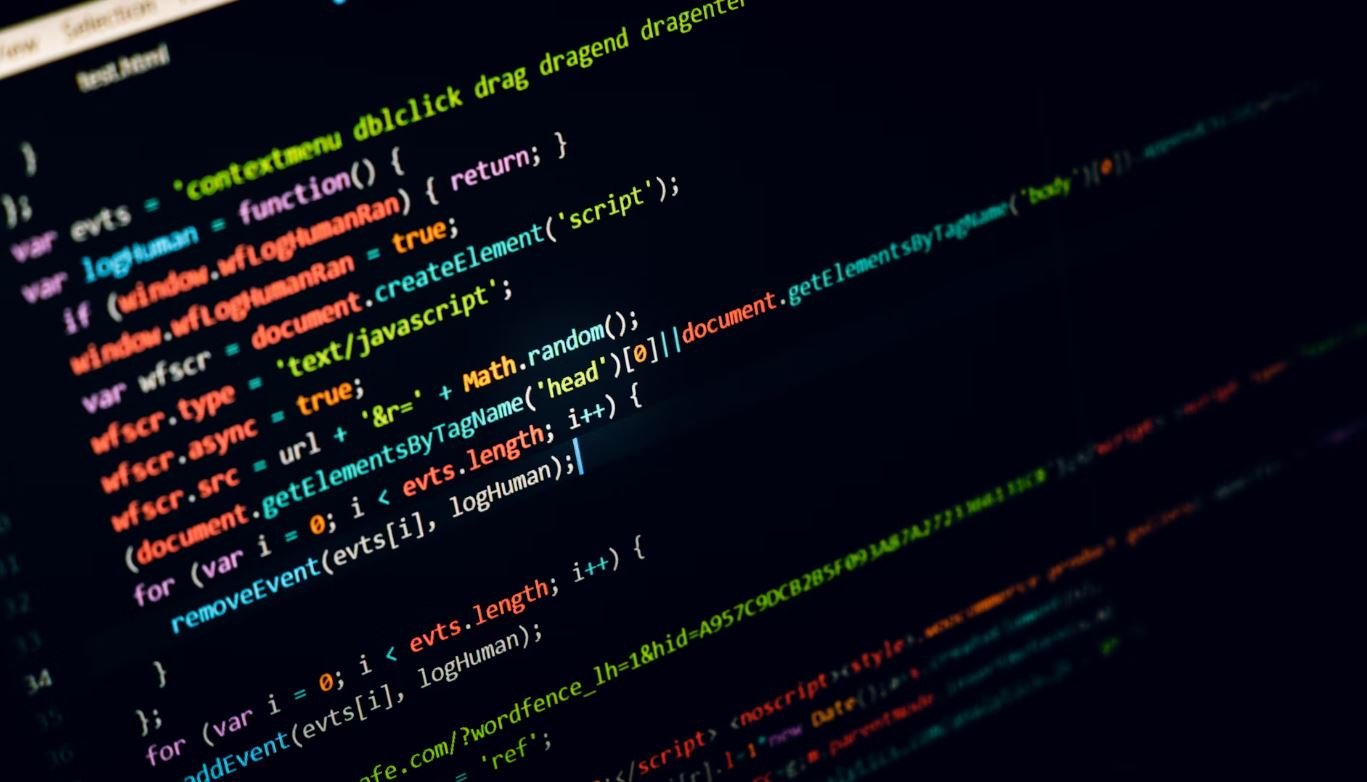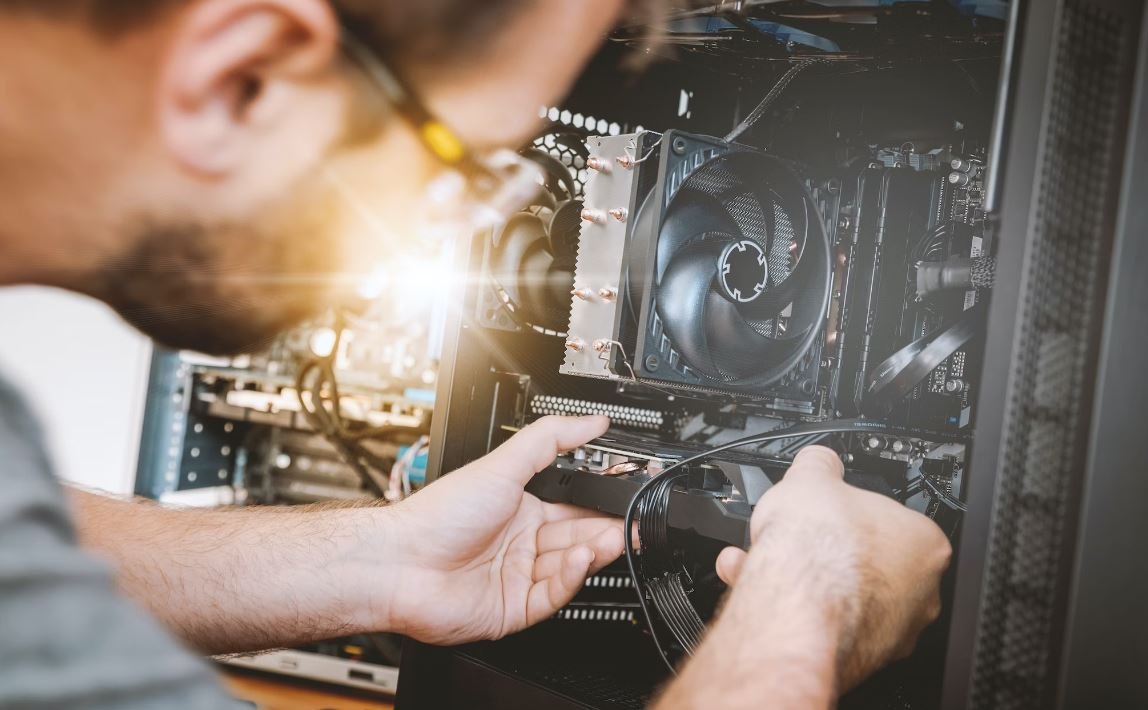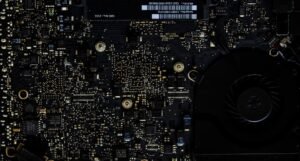Deepfake or Deep Fake
Deepfake, a combination of “deep learning” and “fake,” refers to the use of artificial intelligence to create realistic yet manipulated videos or audio. The technology involved in creating deepfakes has advanced rapidly, raising concerns about misinformation and potential misuse.
Key Takeaways:
- Deepfake refers to manipulated videos created using artificial intelligence.
- Advanced technology raises concerns about misinformation and misuse.
- Vigilance and fact-checking are crucial in detecting deepfakes.
- Legislation and technological solutions are being developed to combat deepfakes.
**Deepfake** technology leverages machine learning algorithms, specifically deep neural networks, to generate videos that convincingly alter a person’s appearance or voice, often making it difficult to distinguish reality from fabrication. *Deepfakes can potentially be used for malicious purposes such as spreading fake news, defaming individuals, or manipulating public opinion.* As the development and accessibility of deepfake technology increase, it becomes imperative to understand the potential risks and how to mitigate their impact.
The Rise of Deepfake Technology
Deepfake technology has gained notable attention due to its potential to deceive and manipulate. This technology combines artificial intelligence and deep learning techniques, allowing for the creation of highly realistic videos that overlay one person’s face onto another’s body or alter characteristics such as facial expressions or speech patterns. *With deepfake technology, creators can make individuals appear to say or do things they never did, leading to significant implications for privacy, reputation, and trust.*
Identifying Deepfakes
Detecting deepfakes can be challenging as the quality and realism of these manipulated videos continue to improve. However, there are several indicators that can help identify deepfakes:
- Visual anomalies: Pay attention to subtle irregularities around the face or body, such as blurry edges, inconsistent lighting, or unnatural movements.
- Audio mismatches: Analyze the audio to detect any discrepancies between mouth movements and speech or inconsistencies in voice quality.
- Contextual analysis: Compare the content of the video with known facts, existing evidence, or verified sources to identify potential inconsistencies.
The Implications of Deepfakes
Deepfakes have far-reaching implications for various sectors, including:
| Sector | Implications |
|---|---|
| Politics | Deepfakes can be used to fabricate politically motivated videos, spreading misinformation and undermining trust in democratic processes. |
| Entertainment | Deepfake technology can be used in the entertainment industry to create realistic scenes or performances without the need for actors. |
| Cybersecurity | Deepfakes can be used for impersonation attacks, compromising sensitive information or carrying out fraud. |
*The potential harm arising from deepfakes requires increased awareness and proactive measures to address the ethical and legal challenges they pose.* Efforts are being made to combat deepfakes through a combination of legislation, advanced AI algorithms for detection, and public education on how to recognize and mitigate the impact of deepfake content. However, the race between deepfake creators and those seeking to counter them remains ongoing, requiring continued vigilance and adaptability.
Combating Deepfakes
To combat the threat of deepfakes, various strategies are being employed:
- Legislation: Governments around the world are enacting laws to criminalize the creation and dissemination of deepfake content for malicious purposes.
- Technological solutions: AI algorithms are being developed and refined for deepfake detection and authentication.
- Media literacy: Raising awareness and educating the public about deepfakes helps individuals become more discerning consumers of digital content.
| Deepfake Detection Solutions | Accuracy |
|---|---|
| Image Forensics | 75% |
| Audio Analysis | 80% |
| Contextual Analysis | 85% |
The Future of Deepfakes
*As technology continues to evolve, so do deepfakes.* While efforts to combat deepfakes are ongoing, the development of AI algorithms and new techniques for creating even more convincing deepfakes remains a concern. **Continuing research and collaboration between technology experts and policymakers are essential to stay ahead of potential threats** and safeguard individuals, organizations, and society as a whole.

Common Misconceptions
Misconception #1: Deepfakes are always used for harmful purposes
One common misconception surrounding deepfakes is that they are solely used for malicious or harmful purposes. While it is true that deepfakes can be misused to create fake news, manipulate political situations, or commit fraud, not all deepfakes have negative intentions.
- Deepfakes can be used in the entertainment industry to create realistic visual effects.
- Brands and marketers can utilize deepfakes to generate creative and engaging advertising campaigns.
- Deepfakes have potential applications in education and training for simulating real-world scenarios.
Misconception #2: Spotting deepfakes is always easy
Another misconception is that spotting deepfakes is a straightforward task. While there are some signs that can help people identify deepfakes, such as unnatural facial movements or inconsistencies, deepfake technology continues to evolve, making detection more difficult.
- Newer deepfakes can replicate imperfections, making them harder to distinguish from real videos.
- Deepfake detection methods are constantly being developed to keep up with the advancements in deepfake technology.
- Trained professionals and AI algorithms are often required to accurately identify deepfakes.
Misconception #3: Deepfakes are illegal everywhere
It is a misconception that deepfakes are illegal in all jurisdictions. While some countries have specific laws concerning deepfakes, the legality can vary depending on the context and purpose of their creation and distribution.
- Legal guidelines surrounding deepfakes are still evolving and differ across the globe.
- Some countries have strict regulations specifically related to political deepfakes.
- It is important to understand the laws in your jurisdiction before engaging with deepfake creation or distribution.
Misconception #4: Deepfakes are always visually flawless
Many people believe that deepfakes always appear visually flawless, making it nearly impossible to distinguish them from genuine videos. However, this is not entirely true, as deepfakes can still have imperfections or artifacts that can help in identifying them.
- Some deepfakes may lack subtle details or exhibit unnatural facial movements.
- Certain deepfake algorithms struggle with accurately replicating hair motion or 3D depth perception.
- Advanced forensic analysis techniques can assist in uncovering visual discrepancies in deepfake videos.
Misconception #5: Deepfakes are only a recent phenomenon
Deepfakes have gained significant attention in recent years, but it is a misconception to think that they are a purely modern invention. Deepfake technology can be traced back to the early 2010s, and its development has been ongoing since then.
- Deepfake techniques have been utilized in films and entertainment for visual effects purposes for several years.
- Early deepfakes were mostly created by individuals with advanced technical skills, but now, user-friendly tools are available to a broader audience.
- The growing accessibility of deepfake technology has led to increased concerns about its potential abuse.

Introduction
Deepfake technology has surged in popularity and raised concerns about its potential impact on society. Deepfake refers to the creation of highly realistic synthetic media, such as images or videos, using artificial intelligence algorithms. These advancements have sparked debates about the ethics, consequences, and challenges surrounding deepfake technology. The following tables provide insightful data and information to shed light on the deepfake phenomenon.
The Rise of Deepfakes
Table: Notable Deepfake Cases Over the Years
| Year | Notable Deepfake Case |
|---|---|
| 2017 | FaceSwap – Neural network-based face swapping software goes viral |
| 2018 | Deepfake Pornography – Websites dedicated to non-consensual pornographic content using deepfake technology appear |
| 2019 | Deepfake Politics – AI-generated political videos emerge during election campaigns |
| 2020 | Tom Cruise Deepfakes – Creator “Ctrl Shift Face” gains attention for realistic Tom Cruise impersonations |
Deepfake Techniques
Table: Different Approaches to Creating Deepfakes
| Technique | Description |
|---|---|
| Autoencoders | Use unsupervised learning to encode and decode image or video data, relying on neural networks’ ability to detect patterns and generate synthetic content |
| Generative Adversarial Networks (GANs) | Involve a generator network that produces synthetic content and a discriminator network that tries to distinguish between real and fake data |
| Reenactment | Overlay an actor’s facial expressions and movements onto a target person’s image or video, while ensuring the target person’s identity is maintained |
Deepfake Detection Techniques
Table: Approaches for Identifying Deepfake Media
| Technique | Explanation |
|---|---|
| Forensic Analysis | Examine subtle artifacts, inconsistencies, and unnatural elements in deepfake media to uncover anomalies |
| Blockchain Timestamping | Timestamp media content using blockchain technology to verify its authenticity and detect potential tampering |
| AI-Powered Tools | Develop machine learning models capable of distinguishing between real and manipulated media based on patterns and discrepancies |
Deepfakes and Misinformation
Table: Impact of Deepfakes on Social Media
| Effect | Description |
|---|---|
| Disinformation | Spreading misleading narratives, fake news, or fabricated events using manipulated media content |
| Distrust | Eroding public trust in media and information sources, causing skepticism and uncertainty among consumers |
| Manipulation | Targeting individuals or groups by altering media content to influence public opinion or undermine reputations |
Ethical Concerns of Deepfakes
Table: Ethical Considerations Surrounding Deepfake Technology
| Issue | Potential Impact |
|---|---|
| Privacy Violations | Deepfake technology can endanger individuals’ privacy by superimposing their likeness into explicit or harmful scenarios |
| Fraud and Scams | Criminals can exploit deepfakes to deceive and defraud people by impersonating trusted individuals or authorities |
| Legal Implications | Deepfakes raise complex legal questions, including intellectual property issues, impersonation cases, and the boundaries of free speech |
Deepfakes in Entertainment
Table: Notable Deepfake Creations in the Entertainment Industry
| Example | Explanation |
|---|---|
| Young Arnold Schwarzenegger in Terminator: Dark Fate | A deepfake technique was used to de-age the actor and recreate his likeness from previous films |
| Carrie Fisher in Rogue One: A Star Wars Story | A combination of CGI and a deepfake-like approach helped bring back the actress as Princess Leia, using previously filmed scenes and CGI enhancements |
| Digital Resurrections | Posthumous appearances of deceased actors made possible by utilizing existing footage and advanced visual effects techniques |
Deepfakes and Political Manipulation
Table: Key Examples of Deepfakes in Political Contexts
| Case | Description |
|---|---|
| Barack Obama Video | A deepfake video of former President Obama was created to raise awareness about the potential dangers of manipulated media |
| World Leaders | Political figures’ videos are manipulated to create misleading narratives, compromise public perception, or spark international conflicts |
| Election Campaigns | Deepfakes targeting candidates, spreading false information, or altering speeches to influence election outcomes |
Deepfake Regulations and Countermeasures
Table: Steps Taken to Regulate and Mitigate Deepfake Risks
| Action | Description |
|---|---|
| Legislation | Countries introducing laws to address the misuse of deepfake technology, enhance accountability, and safeguard against its negative impact |
| Media Literacy | Promoting education and awareness to help individuals identify and critically evaluate deepfake content |
| Technological Solutions | Developing advanced detection systems, authentication methods, and watermarking techniques to spot and verify altered media |
Conclusion
Deepfake technology has undoubtedly revolutionized media manipulation, presenting both exciting possibilities and significant concerns. As seen in the tables above, the proliferation of deepfakes has impacted various domains, including entertainment, politics, and social media. While the technology holds promise for creative applications, the ethical and societal risks associated with its malicious use are substantial. The need for robust regulations, improved detection techniques, and media literacy initiatives is paramount in combating the harmful effects of deepfake technology and preserving trust in the digital realm.
Deepfake or Deep Fake – Frequently Asked Questions
What is a deepfake?
A deepfake is a technique that utilizes artificial intelligence and deep learning algorithms to create or manipulate digital content, often videos, in a way that makes them appear authentic but are actually falsified or fabricated. It can involve replacing someone’s face with another person’s face or altering the content in a realistic manner.
How are deepfakes created?
Deepfakes are created using advanced machine learning techniques, particularly a subset called generative adversarial networks (GANs). GANs consist of two neural networks: one generates the fake content, and the other tries to differentiate between real and fake content. Through training and iterations, the networks refine the output to make it more realistic.
What are the potential risks and dangers of deepfakes?
Deepfakes can be used maliciously to spread misinformation, defame individuals, or manipulate public opinion. They can lead to identity theft and can be harmful in personal, political, and business contexts. The realistic nature of deepfakes can make it difficult for people to differentiate between real and fabricated content, creating trust and credibility issues.
Are there any legitimate uses of deepfakes?
While deepfakes are mostly associated with negative implications, they can also have constructive applications. For example, they can be used in the entertainment industry for special effects and to bring characters back to life. Deepfakes can also help in research, training, and education, allowing for realistic simulations and scenarios.
Can deepfakes be detected?
As deepfake technology evolves, so does the technology to detect and counter them. Various researchers and organizations are actively working on developing deepfake detection methods. These methods can analyze subtle visual cues, inconsistencies, or artifacts in the manipulated content to identify potential deepfakes. However, the detection techniques may not always be foolproof.
What can individuals do to protect themselves from deepfakes?
Individuals can protect themselves from deepfakes by being vigilant and cautious when consuming digital content. It is important to verify the source of the content, cross-check information, and rely on trusted sources. Additionally, staying informed about the advancements in deepfake technologies and understanding how to identify potential signs of manipulation can be helpful.
What are the legal implications of deepfakes?
The legal implications of deepfakes are still evolving and vary across jurisdictions. In general, deepfakes that are used for harmful purposes like defamation, blackmail, or fraud may be subject to legal actions such as copyright infringement, identity theft, or invasion of privacy. Laws surrounding deepfakes are being developed to handle their increasingly sophisticated nature.
How can technology be used to combat deepfakes?
Technological advancements are crucial in combating deepfakes. Researchers are developing AI-based tools and algorithms that can detect and flag potential deepfakes. Governments and technology companies are investing in research and development to create effective deepfake detection systems. Additionally, educating users about deepfakes and promoting media literacy can reduce the impact and spread of deepfake content.
What is being done to regulate deepfakes?
Regulation of deepfakes is an ongoing challenge for governments worldwide. Some countries have implemented legislation to address deepfakes, focusing on areas such as privacy, disclosure, and explicit labeling of manipulated media. International collaborations and discussions are being held to establish guidelines and standards for handling deepfakes and their potential consequences.
Should we be concerned about the future of deepfakes?
Yes, concerns about deepfakes are valid. As the technology advances, it becomes increasingly difficult to distinguish between real and fake content. Deepfakes have the potential to disrupt trust, influence public opinion, and damage reputations. It is important to remain vigilant and proactive in understanding, preventing, and mitigating the risks associated with deepfakes.




